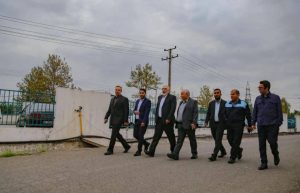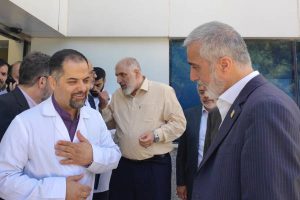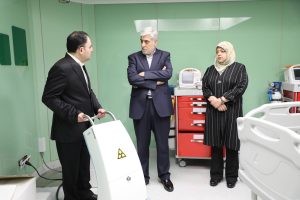
فهرست مطالب
برای امتیاز به این نوشته کلیک کنید!
[کل: 0 میانگین: 0]
Rethinking Health: When Movement Becomes Medicine
Barekat Health & Pharmaceutical Group: Chronic diseases such as diabetes, hypertension, obesity, and depression are on the rise globally. Despite significant pharmaceutical advances, the world is gradually rediscovering a fundamental scientific truth: regular physical activity can be just as effective—and in some cases, even more effective—than medication.
Multiple peer-reviewed studies confirm that consistent exercise, whether in the form of brisk walking, strength training, or aerobic workouts, plays a dual role as both a preventive and therapeutic approach to many physical and mental health conditions.
Sedentary lifestyles have now become one of the top five global risk factors for premature death. Meanwhile, digital devices, desk-bound routines, and growing consumerism have further reduced daily physical activity.
This shift underscores the broader role of exercise—not only in alleviating symptoms but also in enhancing overall well-being, boosting energy levels, and fostering social engagement. With a structured fitness regimen, individuals can achieve both physical resilience and psychological balance.
Movement Against Depression & Anxiety: Therapy Through Action
A growing body of evidence shows that regular physical activity can significantly reduce the intensity of depression and anxiety. Exercise triggers the release of endorphins, dopamine, and serotonin—three crucial neurochemicals responsible for mood regulation, relaxation, and emotional energy. Even moderate activities such as brisk walking or yoga have been found to function similarly to antidepressant medications—without the side effects.
In some countries, particularly in Scandinavia, exercise-based therapy has replaced medication for treating depression in adolescents. Group fitness activities are also proven to reduce social isolation, fostering community and connection among participants. Furthermore, regular movement improves sleep quality, enhances focus, and reduces intrusive negative thoughts. Today, many psychotherapists recommend integrating physical activity into mental health treatment plans to ensure deeper and more sustainable recovery.
A Healthy Heart Starts with 30 Minutes of Daily Movement
Cardiovascular disease remains the leading cause of death worldwide. Yet, research suggests that just 30 minutes of moderate physical activity per day-such as walking or cycling—can lower blood pressure, raise good cholesterol (HDL), and reduce the risk of heart attacks by up to 30%.
Exercise also supports weight loss, stress management, and proper function of the autonomic nervous system, all of which are essential for heart health. Improved circulation further minimizes the risk of sudden clots. Even for individuals with a family history of heart disease, a physically active lifestyle significantly reduces the likelihood of severe cardiac events. Additional benefits include increased lung capacity, reduced systemic inflammation, and a notable boost in daily energy levels.
Natural Enemy of Type 2 Diabetes
For individuals with type 2 diabetes, exercise improves insulin sensitivity, meaning the body can regulate blood glucose more effectively. Research conducted by Harvard University found that combining aerobic and resistance training delivers the most effective results for diabetes management.
Consistent physical activity also helps reduce body weight, stabilize blood sugar levels after meals, and target abdominal fat—the most dangerous form. Regular workouts enhance the muscles’ capacity to store glucose, which directly impacts blood sugar regulation. In early stages of diabetes, a structured fitness program may even reduce or eliminate the need for insulin therapy. Moreover, active diabetic patients often cope better with stress and enjoy improved sleep quality.
Exercise & Brain: Preventing Alzheimer’s , Cognitive Declin
Regular physical activity increases cerebral blood flow, strengthens memory, and enhances cognitive performance. Long-term studies indicate that individuals who maintain consistent exercise habits in midlife are significantly less likely to develop dementia or Alzheimer’s in later years.
Exercise promotes the growth of neurons and stimulates the production of brain-derived neurotrophic factor (BDNF), which supports short-term memory and executive function. Aerobic exercise has even been shown to enlarge the hippocampus—the brain’s memory center—in older adults. Additionally, it reduces neuroinflammation and improves mood, making physical activity a key strategy for preserving mental independence in old age.
Stronger Bones & Muscles: A Path to Pain-Free Aging
As we age, muscle loss and osteoporosis become increasingly common. Resistance training, stretching, and weight-bearing exercises help increase bone density and preserve muscle mass. For older adults, regular exercise not only reduces the risk of falls but also supports continued mobility and independence.
Activities such as brisk walking, tai chi, and resistance band workouts are especially effective in preventing fractures. Physical inactivity in old age can lead to weakened joints and a higher risk of injury. Consistent movement improves balance, flexibility, and coordination—transforming the concept of aging into a vibrant, active phase of life. For postmenopausal women, exercise can significantly slow the progression of bone loss.
Exercise & Immunity: Activating Body’s Natural Defense
Mild to moderate exercise strengthens the immune system. During the COVID-19 pandemic, data showed that people with more active lifestyles experienced milder symptoms and fewer complications. Physical activity boosts white blood cell function and enhances the body’s ability to fight infections.
Increased heart rate and breathing improve circulation, allowing immune cells to reach affected areas more efficiently. Exercise also regulates cortisol levels (the stress hormone), maintaining a balanced immune response. A study from the University of North Carolina revealed that just 20 minutes of daily walking can reduce the risk of the common cold by 43%. As such, physical activity is now recognized as a cornerstone of preventive medicine worldwide.
Global Trends & Iran’s Evolving Approach
In many developed countries, physicians have begun prescribing exercise instead of medication for certain chronic conditions. These prescriptions often include weekly fitness plans monitored by healthcare professionals.
In Scotland, mental health prescriptions now include nature therapy and group exercise programs, which foster social interaction and personal responsibility without side effects. Since 2018, the World Health Organization has promoted the policy of “Less Medicine, More Movement” as a guiding principle—advocating for doctors to prescribe motion instead of more medication.
In Iran, there has been a growing acknowledgment of the role of physical activity in public health policymaking. The Ministry of Health, in collaboration with the Iranian Sports Medicine Federation, has launched initiatives such as “Healthy Lifestyle” and “Non-Communicable Disease Prevention through Exercise.” Educational programs in some health centers promote walking, stretching in workplaces, and movement for the elderly.
However, challenges remain: lack of insurance coverage, insufficient specialized trainers, and the absence of formal exercise prescriptions hinder widespread adoption. Municipalities like Tehran have contributed by expanding pedestrian-friendly spaces, installing fitness stations, and launching city-wide wellness campaigns to promote daily exercise culture.
Conclusion
In a world where medications often treat symptoms rather than root causes—and sometimes create new problems—exercise remains one of the safest, most effective, and most affordable tools for both prevention and healing. As this report illustrates, regular physical activity can play a leading role in managing depression, controlling diabetes, preventing cognitive decline, and maintaining general health.
It is time to move exercise from the margins of lifestyle to the core of healthcare. The future of human health may not lie in the shelves of pharmacies, but in parks, walking trails, and fitness centers. Physicians, health policymakers, and families must all contribute to redefining the role of movement in our daily lives. Movement is not a luxury—it is a fundamental right of the body and mind.
برای امتیاز به این نوشته کلیک کنید!
[کل: 0 میانگین: 0]
مطالب مرتبط
-
Barkat Group specialized meeting

-
Safa Appointed as Barekat General Director

-
Barekat Health & Pharmaceutical Group at the 10th Iran Pharma Exhibition

-
Ali Safa visits Sobhan Oncology & Sobhan Darou

-
Pirsalehi & Safa visit Saman Daroo 8 Knowledge-based Company

-
Barekat Managing Director Visits Samen Pharmaceutical Company

-
Honoring Pharmacists’ Day

-
Barekat Top Executives Visiting to Barekat Hospital

